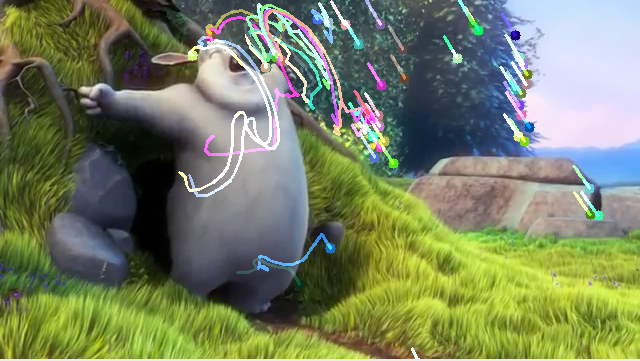Python OpenCV:使用 Lucas-Kanade 方法的光流
先决条件: OpenCV
OpenCV 是一个用于计算机视觉、机器学习和图像处理的大型开源库。 OpenCV 支持多种编程语言,如Python、C++、 Java等。它可以处理图像和视频以识别物体、面部,甚至是人类的笔迹。当它与各种库集成时,例如 Numpy,它是一个高度优化的数值运算库,那么武器库中的武器数量就会增加,即在 Numpy 中可以进行的任何操作都可以与 OpenCV 结合使用。
在本文中,我们将学习如何应用 Lucas-Kanade 方法来跟踪视频中的某些点。要跟踪点,首先,我们需要找到要跟踪的点。为了找到这些点,我们将使用cv2.goodFeaturesToTrack() 。现在,我们将捕获第一帧并检测一些角点。这些点将使用 OpenCV 提供的 Lucas-Kanade 算法进行跟踪,即cv2.calcOpticalFlowPyrLK() 。
Syntax: cv2.calcOpticalFlowPyrLK(prevImg, nextImg, prevPts, nextPts[, winSize[, maxLevel[, criteria]]])
Parameters:
prevImg – first 8-bit input image
nextImg – second input image
prevPts – vector of 2D points for which the flow needs to be found.
winSize – size of the search window at each pyramid level.
maxLevel – 0-based maximal pyramid level number; if set to 0, pyramids are not used (single level), if set to 1, two levels are used, and so on.
criteria – parameter, specifying the termination criteria of the iterative search algorithm.
Return:
nextPts – output vector of 2D points (with single-precision floating-point coordinates) containing the calculated new positions of input features in the second image; when OPTFLOW_USE_INITIAL_FLOW flag is passed, the vector must have the same size as in the input.
status – output status vector (of unsigned chars); each element of the vector is set to 1 if the flow for the corresponding features has been found, otherwise, it is set to 0.
err – output vector of errors; each element of the vector is set to an error for the corresponding feature, type of the error measure can be set in flags parameter; if the flow wasn’t found then the error is not defined (use the status parameter to find such cases).
例子:
import numpy as np
import cv2
cap = cv2.VideoCapture('sample.mp4')
# params for corner detection
feature_params = dict( maxCorners = 100,
qualityLevel = 0.3,
minDistance = 7,
blockSize = 7 )
# Parameters for lucas kanade optical flow
lk_params = dict( winSize = (15, 15),
maxLevel = 2,
criteria = (cv2.TERM_CRITERIA_EPS | cv2.TERM_CRITERIA_COUNT,
10, 0.03))
# Create some random colors
color = np.random.randint(0, 255, (100, 3))
# Take first frame and find corners in it
ret, old_frame = cap.read()
old_gray = cv2.cvtColor(old_frame,
cv2.COLOR_BGR2GRAY)
p0 = cv2.goodFeaturesToTrack(old_gray, mask = None,
**feature_params)
# Create a mask image for drawing purposes
mask = np.zeros_like(old_frame)
while(1):
ret, frame = cap.read()
frame_gray = cv2.cvtColor(frame,
cv2.COLOR_BGR2GRAY)
# calculate optical flow
p1, st, err = cv2.calcOpticalFlowPyrLK(old_gray,
frame_gray,
p0, None,
**lk_params)
# Select good points
good_new = p1[st == 1]
good_old = p0[st == 1]
# draw the tracks
for i, (new, old) in enumerate(zip(good_new,
good_old)):
a, b = new.ravel()
c, d = old.ravel()
mask = cv2.line(mask, (a, b), (c, d),
color[i].tolist(), 2)
frame = cv2.circle(frame, (a, b), 5,
color[i].tolist(), -1)
img = cv2.add(frame, mask)
cv2.imshow('frame', img)
k = cv2.waitKey(25)
if k == 27:
break
# Updating Previous frame and points
old_gray = frame_gray.copy()
p0 = good_new.reshape(-1, 1, 2)
cv2.destroyAllWindows()
cap.release()
输出:

